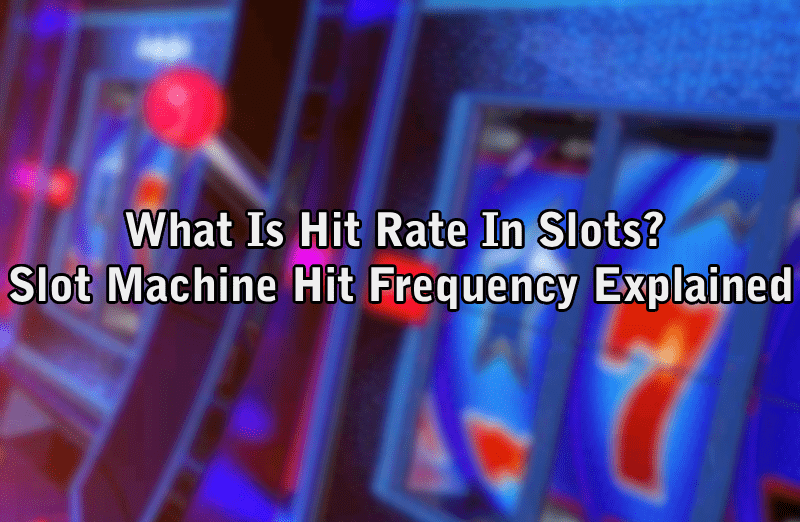
What Is Hit Rate In Slots? Slot Machine Hit Frequency Explained

Slot games might be one of the most straightforward casino games you can play, requiring no skill, but they come with terms not everyone may be well-versed in.
One of these terms is hit rate or hit frequency. In this blog post, we are going to explore what a hit rate is in slots, how you can find it, if it affects how much you might win, and how it compares or differs from the payout percentage.
What Does Hit Rate (Hit Frequency) Mean In Slots?
Simply put, hit frequencies are the percentage of spins that will award some form of payout (winning spins).
But, this rate is merely theoretical and is calculated over a large sample of spins. For example, if a slot has a hit frequency of 26% and you spin it 1,000 times, that means that 260 of these spins may result in a payout, in theory.
The average hit frequency in online slots is around 25% to 27%. The higher the hit rate, the higher your chances of potentially landing a win, in theory.
How Can You Find a Slot Machine’s Hit Rate?
Finding out a slot game’s hit rate may not be an easy undertaking at times. That is because some slot game software providers do not readily provide this information.
That being said, there are some slot games that come with the hit frequency declared in the information section. It may also sometimes be found on the developer’s website instead.
Alternatively, there may be others that have calculated this value already, so you could find it online by searching the slot’s name.
Play Slots & Online Casino Games
Does Hit Rate Affect How Much You Might Win?
No, the hit rate does not affect how much you might win. The hit rate only gives you a rough idea of how often wins may land.
Be that as it may, more than one element affects how a slot pays out. The Return to Player (RTP) rate, also known as a payout percentage, the maximum win potential, and the random nature (thanks to the Random Number Generator (RNG)) of slot games all play a part in how much a slot game pays out.
There is also the matter of how much a combination of symbols pays out, any bonus features and the presence or absence of jackpots.
Hit Frequency vs Payout Percentage
A slot’s hit frequency and the payout rate are not the same, so it is important to be able to distinguish between them.
A slot’s RTP is a theoretical indicator of how much of the money taken in by a slot game is paid back out to players over time, while a hit frequency represents how often any sort of payout can occur. For example, if a slot has an RTP rate of 96%, it pays £95 back out to players for every £100 it takes in, in theory.
Another critical thing to remember is that the payout percentage is also a theoretical average calculated by the developer over a large sample of spins. And, due to the random nature of slots, players may find that they win more or less than this.
Can You Calculate The Hit Rate on Slot Machines?
In theory, yes. However, it wouldn’t be practical. If you performed a large number of spins and recorded the results as a hit (a winning spin) or a miss (a non-winning spin) and worked out the proportion of the spins that were hits, then you would have the hit rate.
However, this would not be entirely reliable and may cost you a lot of money to get a large enough sample of spins. Not to mention slots are random and unpredictable.
As mentioned above, the hit rate depends on various factors, including the number of symbols in a slot and the random number generator.
Conclusion
Hit frequencies and RTP rates can be useful theoretical indicators of a slot’s attributes, and many players use them when deciding on a slot game to play. However, these only serve as a guide since they may not play out the same in reality due to the randomness of slot games.
Slot games rely on the RNG to generate random and unpredictable outcomes to ensure fairness.
*All values (Bet Levels, Maximum Wins, etc.) mentioned in relation to this slot game are subject to change at any time.





























































